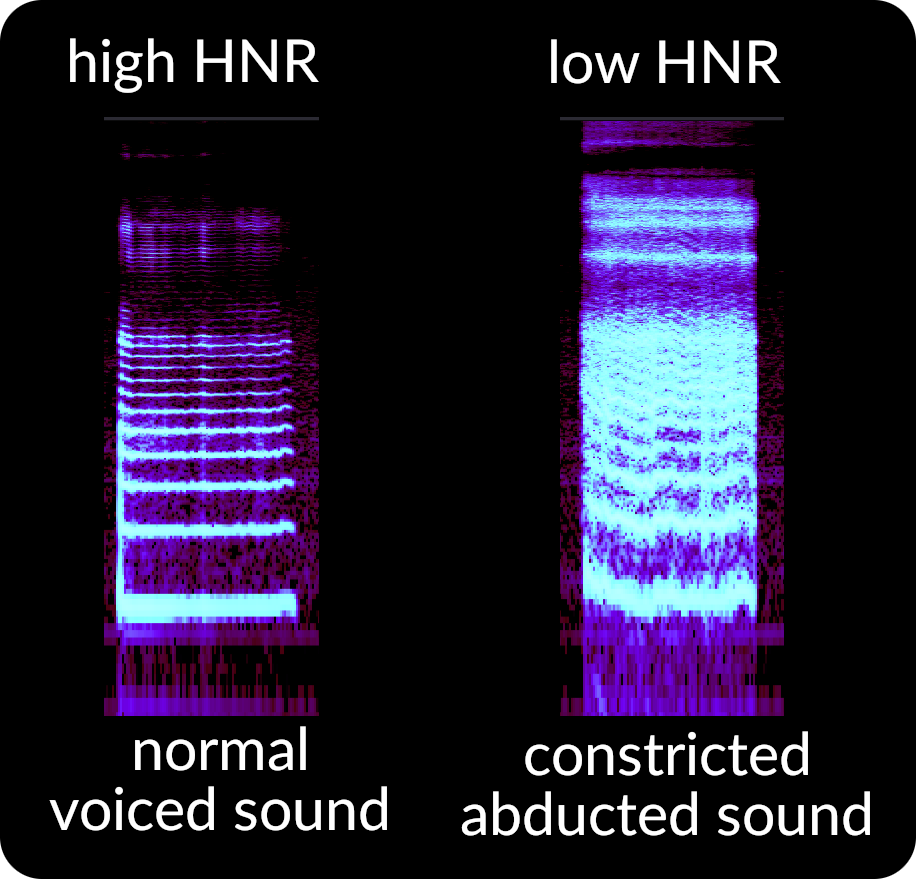This site is under construction! Stuff be missing, beware! Contribute!
If you have additions, corrections or concerns, open an issue or contact a maintainer.
Voice Map is released! See here for a giant map of (almost) all voice characteristics and pedagogy!Table of contents
Clarity
Clarity is described as a multi-variable scale from clear and consistent to rough or noisy tone. For example, a voice with lots of breathiness or creak is considered low in clarity, whereas a voice that has a clear tone is considered high in clarity. This concept overlaps a lot with harmonic to noise ratio.
Harmonic to Noise Ratio
Harmonic to Noise Ratio (HNR) is the description of essentially how noisy a voice is.
We have harmonics - which are the horizontal lines in the image - and then there’s noise in between, either from constriction, breathiness or a combination. You can see in the image how there is a clean looking pattern on the left, and a noisy one on the right. This can be called the ‘clarity’ of the voice, though it refers specifically to noise and not things like nasality or knodel (tongue root retraction) effects which might also make a voice sound ‘out of place’.

Primary sources of low Harmonic to Noise ratio:
- abduction (breathiness)
- FVF constriction
- vocal fry and creak
Covers
Covers are anything that ‘covers up’ or disguises a part of a voice or acts to modify the overall quality of the voice. An example is nasality.
Common covers:
- nasality
- tongue root retraction (stitch voice)
- M2 or too low weight